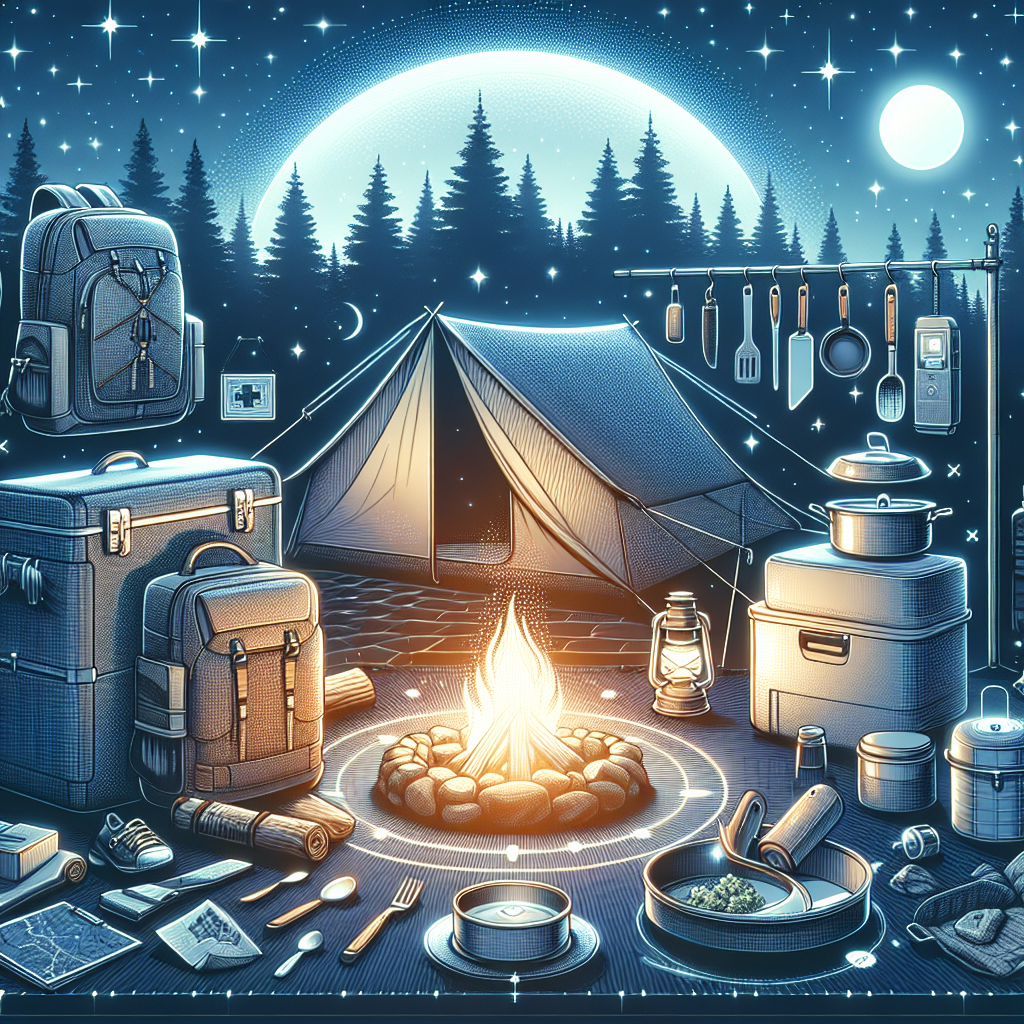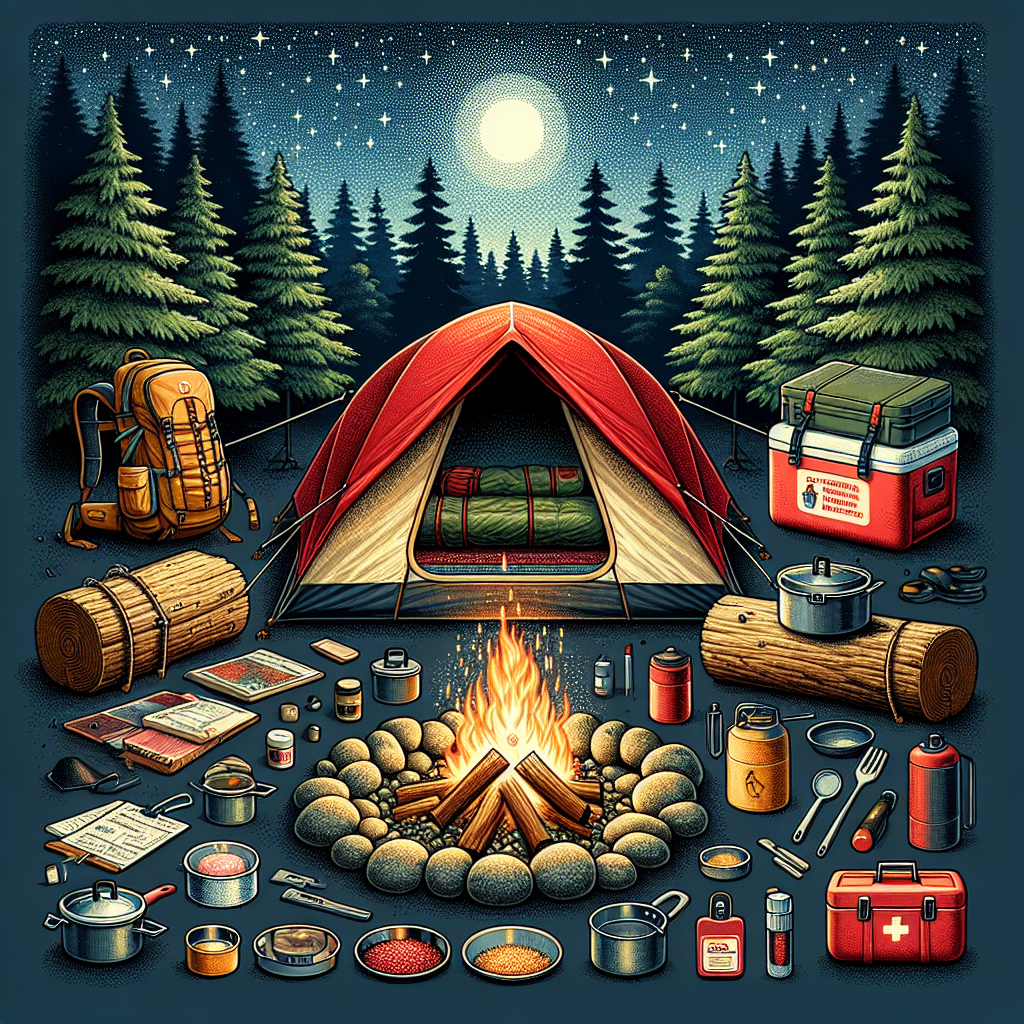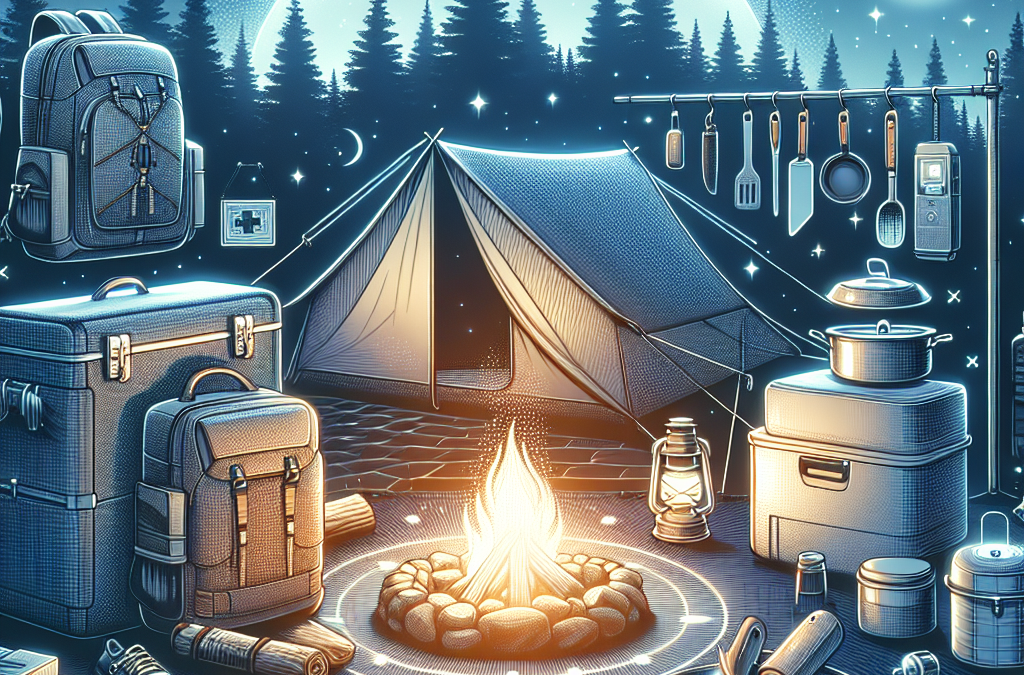Embarking on a camping adventure soon? Brace yourself because your outdoor experience is about to get a whole lot easier! This guide from TrailTrekTribe uncovers some smart camping hacks designed to simplify your journey into the wild. Get ready to capture the essence of the outdoors with ease, whether you’re a seasoned adventurer or a newbie eager to explore nature’s wonders. This write-up extends beyond mere guides and tips, it serves as a platform for an enthusiastic community communicating, learning, and sharing all things camping. With genuine reviews based on firsthand experiences and rigorous testing, you’ll discover how to make the most of your outdoor escapades and foster a deeper connection with nature. So, grab your gear and let’s gear up for some camping hacks that will transform your outdoor experience!

Planning and Organizing
Importance of planning your trip
Planning your camping trip is paramount for a smooth and enjoyable outdoor experience. Without a proper plan, you might end up forgetting essential camping gear or overlook a crucial factor about your chosen campsite. A well-thought-out plan allows you to anticipate potential challenges and find appropriate solutions ahead of time.
Creating a checklist
Having a checklist creates an organized structure that guides you in packing your essentials and when setting up your campsite. List down everything you’ll need, from camping gear to food and clothing items. Cross-check your list to ensure nothing is forgotten. Having a visible checklist will keep you from forgetting important items, making your camping experience more seamless and hassle-free.
Organizing your gear
How you organize your gear can impact your convenience and ease of setting up once you reach the campsite. Group your items based on their functionality-think tents and sleeping bags, cooking equipment, clothes, and toiletries, etc. This tactic ensures each item is readily accessible when you need it and promotes efficient use of your space.
Choosing the right campsite
The beauty of your camping experience greatly depends on your choice of campsite. Research to ensure that your selected site is safe, convenient, and meets your camping needs. The perfect campsite provides plenty of shade, proximity to necessary amenities, and great views. It should also be safe from floods and falling branches.
Essential Camping Gear
Choosing the right camping tent
Your tent should provide a comfortable and secure sleeping space. Consider the number of occupants, the anticipated weather conditions, and your backpack’s storage space before choosing a camping tent. Ensure your chosen tent is waterproof, easy to set up, and fits all occupants comfortably.
Lighting equipment
Proper lighting is essential for your safety and convenience during the night. A good rechargeable lamp or headlamp can provide sufficient illumination in and around your campsite. Also, consider packing a few lanterns or solar-powered lights for additional brightness and ambiance.
Cooking gear and utensils
When it comes to camping, one of the joys includes preparing meals outdoors. Opt for lightweight and durable cookware that can withstand high fire temperatures. Don’t forget a portable stove, a pot, plates, cutlery, and cups. A multipurpose tool with a can opener and knife can also be handy.
Sleeping essentials
A good night’s sleep is essential for replenishing your energy. Besides a comfortable tent, bring along a well-insulated sleeping bag suitable for the forecasted weather conditions. An inflatable pillow and a camping pad will further enhance your comfort.
Packing Efficiently
Utilizing space in your backpack
Optimum use of space in your backpack makes carrying it less strenuous and more organized. Ensure heavy items are stored in the middle, near your back, to maintain good balance. Incorporate the use of packing cubes to promote the organization and easy access to your items.
Prioritizing items on your checklist
Not all items on your checklist are created equal. Prioritize your items based on their importance and necessity. Water, food, sleeping gear, and tents should be at the top of your list, with less essential items such as games and luxury supplies at the bottom.
Weight distribution in your bag
A well-distributed backpack weight reduces your risk of backaches or discomfort during your trip. Store heavy items close to your back and at the center of the backpack. Lighter items should be stored around the heavier ones, ensuring a balance that makes carrying the backpack more comfortable.
Adopting the rolling technique for clothes packing
Save on space and minimize wrinkles by rolling your clothes instead of folding. This packing hack is especially crucial for camping when space is a premium. Rolled clothes take up less room than folded ones, allowing you to pack more in your bag.
Campsite Set-Up Tips
Selecting the ideal spot
When arriving at your campsite, take a moment to observe and select the ideal spot for your tent. It should be flat, devoid of sharp objects, and not in a valley where water could pool during rainfall. Being close to a water source can be convenient but remember it could also attract wildlife.
Setting up your tent
After choosing the best spot, begin setting up your tent. Begin by clearing the area of debris and unrolling your tent on the groundsheet, if you have one, to protect it from moisture and sharp objects. Assemble the tent poles and insert them into the corresponding sleeves of the tent. Always secure your tent using stakes to prevent it from being blown away by the wind.
Creating a kitchen space
A separate kitchen area keeps the sleeping and eating places separate, which aids in maintaining cleanliness. This area should be at least 200 feet away from your tent to deter animals from approaching your sleeping space. Also, make sure it’s downwind from your tent to prevent smoke from engulfing your sleeping area.
Arranging your sleeping area
Arrange your sleeping area for maximum comfort. Place your inflatable camping pad or mattress inside the tent followed by your sleeping bag. Keep your personal belongings, such as clothes and toiletries, within reach in case you need to access them during the night.

Cooking and Food Preparation Hacks
Pre-cooking food at home
To save time and effort at the campsite, consider pre-cooking some meals at home. Foods like pasta sauces, stews, or chili can be cooked ahead of your trip, then heated up over the campfire when you’re ready to eat. This approach ensures quick, easy, and delicious meals without the hassle of extensive cooking.
Using multi-purpose cookware
Opt for versatile cookware like a cast-iron skillet that can be used both for cooking on the campfire or stove and serving. Multi-purpose utensils reduce the amount of gear you need to bring, saving space and weight in your backpack.
Managing perishable items
Perishable items can be a hassle to manage while camping, but they add variety to your camp meals. To keep these items fresh, invest in a good quality cooler and pack it efficiently by placing ice at the bottom, followed by your food items, then topping it off with more ice.
Campfire cooking tips and tricks
cooking over a campfire is all part of the camping experience. Use aluminum foil to cook vegetables or fish directly in the embers of the fire. Remember to use oven mitts or tongs to handle the hot foil packets. A simple grill rack can transform your campfire into a barbecue, providing a broad range of cooking options.
Staying Safe and Comfortable
Coping with different weather conditions
camping involves exposure to different weather conditions. Ensure your tent is waterproof and well-ventilated for those hot, humid nights. Carry layered clothing to accommodate fluctuating temperatures, and don’t forget a good quality rain jacket!
Ensuring personal hygiene
Maintaining personal hygiene is important for your health and comfort during camping. Carry biodegradable wipes for daily freshening up, a small first aid kit for medical emergencies, and enough potable water or a water filter for drinking and cooking purposes.
Wildlife precautions
respect wildlife and maintain your distance. Never feed wild animals and ensure to properly store and dispose of your food to not attract them to your campsite. Know what to do in case of a wildlife encounter and educate yourself about any potentially harmful animals in the area.
Maintaining comfortable sleep conditions
Ensure a well-insulated, warm, and comfortable sleeping bag to recharge your batteries after long hiking or camping days. An air mattress or pad can offer additional comfort and insulation from the ground.
Navigating the Outdoors
Understanding basic navigation skills
Knowing essential navigation skills could avert a crisis in the great outdoors. Learn how to read maps and recognize key landmarks to navigate the wild confidently. Even in this tech era, these basic skills are invaluable if your devices fail or run out of battery.
Using a handheld GPS
A handheld GPS device is a helpful tool for venturing into the wilderness. It gives accurate positional information, helping to keep you on your planned route. While it’s a great tool, it should not replace traditional navigation skills.
Reading a map and compass
The map and compass are traditional navigation tools that every outdoor enthusiast should know how to use. They are independent of battery power and signal reception, making them reliable in wilderness settings.
Recognizing natural signs of direction
Nature provides several signs to help orientate oneself in the wild. The sun, for example, rises in the east and sets in the west. Similarly, the stars; especially the North Star and the Southern Cross can guide you in the right direction.
Minimizing Environmental Impact
Following Leave No Trace principles
As responsible adventurers, we should aim to minimize our impact on the environment. The Leave No Trace principles are excellent guides. These include practices such as camping on durable surfaces, disposing of waste correctly, minimizing campfire impacts, and respecting wildlife among other principles.
Managing waste at the campsite
Dispose of your waste properly by carrying garbage bags to collect your trash. Keep your campsite clean at all times and take your rubbish with you at the end of your camping experience. Recycling where possible is also recommended.
Protecting local wildlife
Protecting wildlife is a key principle of responsible camping. Do not feed wildlife or leave your food unattended, as it can change natural behaviors and potentially harm the animals. Keep your distance and appreciate the wildlife from afar without disturbing their natural habitats.
Camping responsibly
Camping responsibly involves all the practices that reduce harm to the environment, maintain peace with fellow campers, and ensure your safety. Respect campground rules, maintain cleanliness, manage waste properly and leave the campsite as you found it.
Campfire Tips
Building and maintaining a campfire
A campfire is the heart of the camping experience. Know how to safely build and maintain one. Use only designated fire pits or rings, keep your fire small and manageable, and always fully extinguish it before bed or leaving your campsite.
Safety measures when handling fire
Handling fire requires responsibility. Do not leave it unattended, restrict its size, and ensure it is under control at all times. Keep a water bucket and a shovel nearby in case you need to extinguish the fire quickly.
Cooking over a campfire
Cooking over a campfire can be a delicious and enjoyable experience. Use fire-resistant cookware and keep a safe distance from the fire when cooking. You can roast, grill, and even bake with the proper equipment.
Extinguishing a campfire properly
Ensure your campfire is completely out before you leave it. Pour water over the fire, stir the ashes, and pour more water until all hissing sounds stop. Check the campfire area is cold before leaving.
Ease of Dismantling the Campsite
Orderly packing of camping gear
When packaging, start with items furthest from your daily use. Ensure everything is dry before packing to prevent mold and other forms of damage. Check all your gear is in good order for your next camping trip.
Ensuring no traces left behind
Follow the Leave No Trace principles and ensure you leave your campsite cleaner than you found it. Check the site for forgotten items and ensure all rubbish is packed up and taken with you.
Transporting waste back home
You brought in your waste, now it’s time to carry it out. Make sure you consider how to transport it home without smell or spillages.
Preserving the camping experience for future campers
By cleaning up after yourself, you not only preserve the environment but also leave the campsite in good condition for future campers.
Camping can be a thoroughly enjoyable experience if you plan it properly. We hope this guide will help you to have a safe, memorable, and successful camping trip. So, grab your gear and venture into the great outdoors! After all, there’s no better place to feed your soul than in the heart of nature.
At TrailTrekTribe, we’re with you every step of the way. Here’s to many thrilling camping adventures!

